Steamy Java 2010 Blog Part 2

Updated 28 August
| 23 July Tasik Madu |
24 July Wonogiri Train |
25 July C12 Special, Purwodadi |
26 July Kanigoro, Pagottan, Rejosari |
27 July Cepu Forest Railway |
28 July Purwodadi, Merican |
29 July |
| Part 1 | Part 3 |
Post-Tour |
Future Tours |
Around 11:00 we left Ambarawa for Solo and reached Tasik Madu for 2:00. The steam loco use at Tasik Madu has declined and we think that is because road trucks can now unload at the mill which means that the far truck loading point is now used less regularly as it is now the furthest of 3 unloading points from the mill train. Diesels still work the near loading point and only if enough cane comes in do they send the road trucks to the far loading point. This didn't happen today (but was reported for 2 days previously), so No. 6 which was already in steam was pursuaded out to replace a diesel for one shunt on the near loading point.
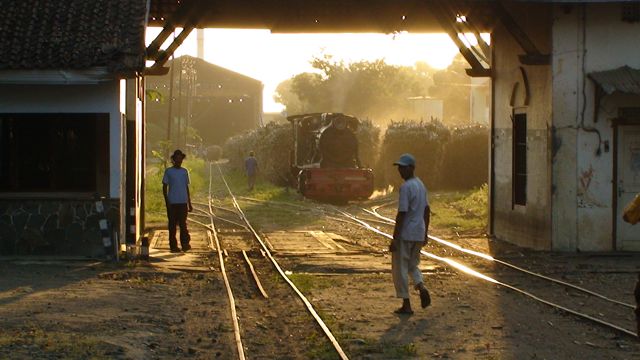
As the sun went down, No. 6 backed its train down towards the mill.
We also chartered the vertical-boiler steam roller. The power steering is broken so it has to be turned by a man walking alongside turning the green handle on the side. It's also acquired a new paint scheme.
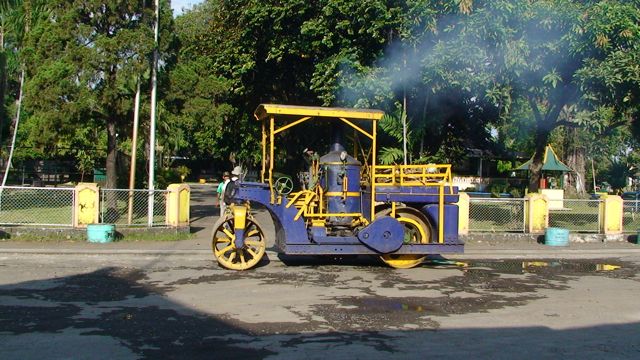
24 July 2010 - Wonogiri Branch Train
With limited activity at Tasik Madu expected, we had 9 people to ride the branch train from Purwosari (junction in Solo) to Wonogiri. We were there before the 7:30 departure time but it wasn't predicted to leave until 8:30 (eventually 9:00) so we had plenty of time to watch the mainline activity. Purwosari station is being rebuilt with raised platforms and an overall roof. This will be apparent in the first picture.
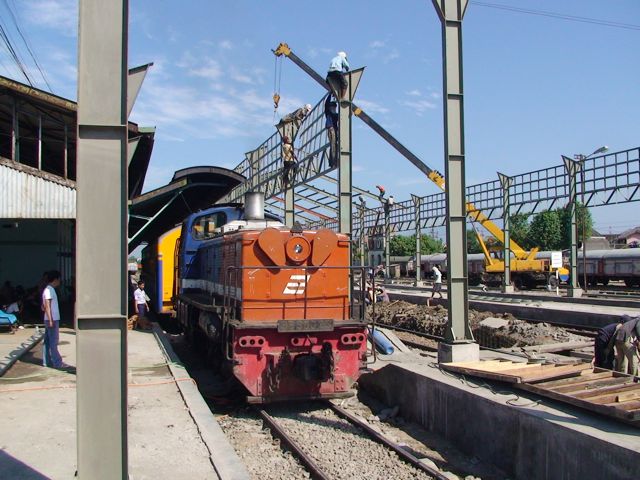
I don't think this type of work could go on in the UK with the trains still running normally. Here the branch loco has run round its one-coach train ready for departure. The crane lifting roof trusses is straddling the normal express lines and all trains including non-stopping trains were running through the platform lines.
As there was time, I wandered across to see our steam loco for tomorrow which was in its shed along with two coaches. It's almost unphottable but this is the best I could do.
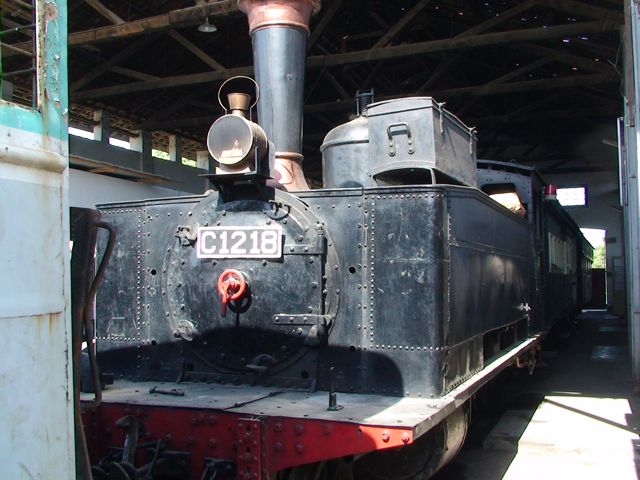
Once under way, I secured footplate rides for 4 of our group. They went up 2 at a time and swapped over at stations. All of the stations along the line now have raised platforms and extensive work is being done at Wonogiri as you will see in the next pictures. The question is 'Why?'. We thought this line was close to closure. What does the future hold for Java's last branch line?
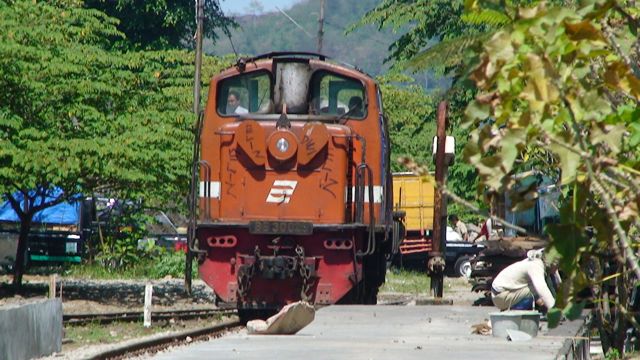
Mega-zoom shot of loco running round. Platform work is going on on the right. The line used to continue beyond the loco until a dam project severed the line.
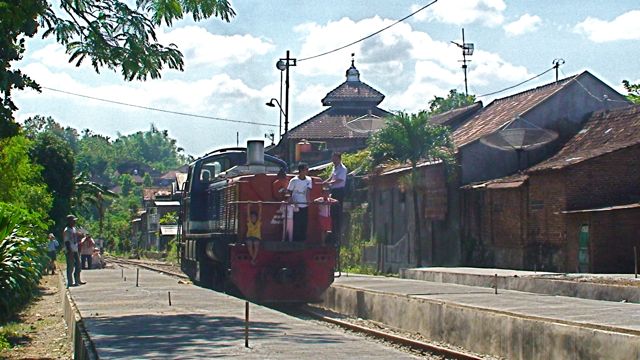
A shot into the light but showing local children (and adults) having a ride for the run round and a mosque in the background.
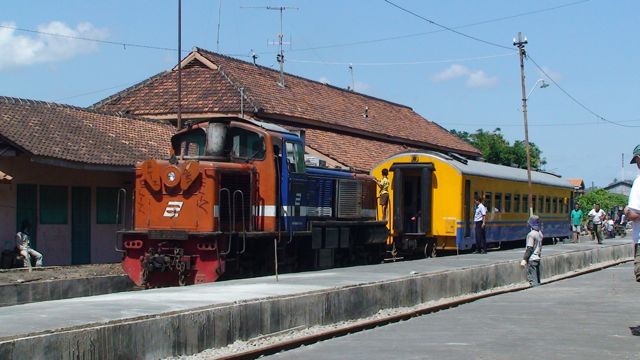
The new raised platforms are apparent as our loco backs onto the train for the return run.
Some of the group are beginning to get a feel for Java so I was able to send one bus to Tasik Madu unescorted this morning. After a reasonable morning, they agree together to take the bus to Wonogiri to ride the return working. We met them part-way back to Solo and exchanged information between buses. My own bus also took 4 people back to Tasik Madu (also unescorted) for the afternoon while the 5 others took the chance to go shopping or have a rest. As this is day 8 of the tour and I have been 'working' from 6 am to 10 pm every day since the start, I'm beginning to look for opportunities to take a break myself so this afternoon was just such a chance. Pacing myself is vital as I need to keep this up for 15 days more including the Post Tour.
25 July 2010 - Solo special with the C12 and Purwodadi mill
Up for a pre-breakfast departure which got us to Purwosari station where the C12 was waiting for us. On Sundays between 6 and 9 cars and motorcycles are banned from the main street and people were promenading and engaging in all sorts of group activities. Without further ado, here are the best of my stills:

Departing Purwosari with the new station construction very apparent
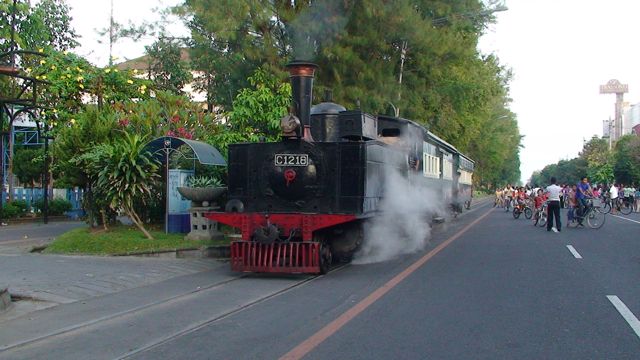
An early shot in the street before we got the sun.
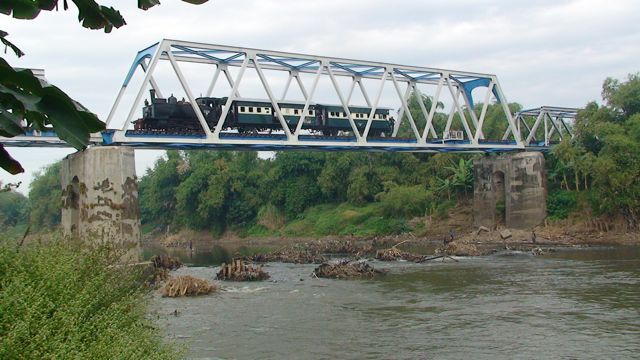
The big bridge.
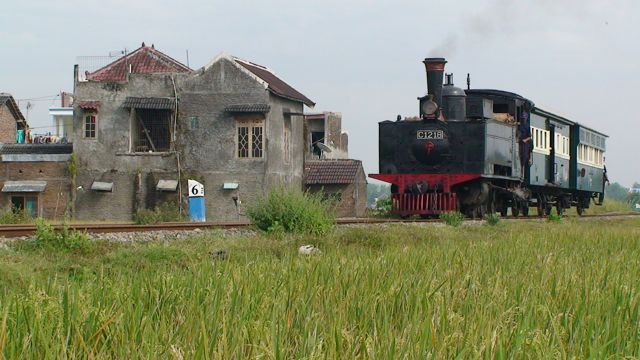
As far as we got. The houses provided a feature in the rice paddies.
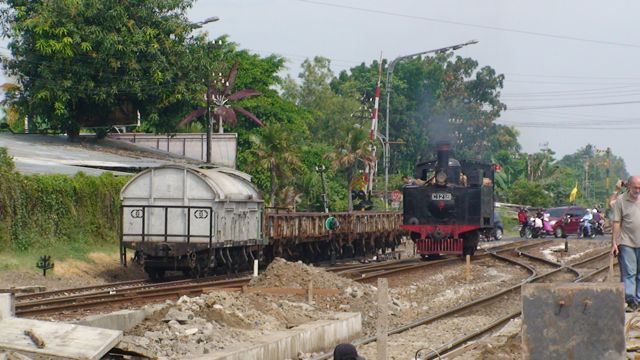
Back at Purwosari, the loco runs round.
After lunch, we headed for Madiun but our intelligence reported that Sudhono was not using steam so we went to Purwodadi mill.

There were 2 steam locos moving the cane from the truck yard and 1 diesel on empties.
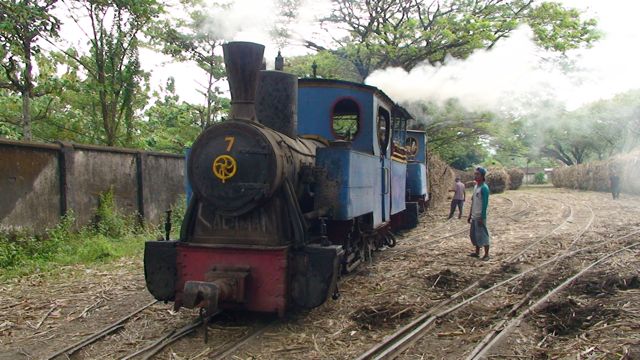
At one point the locos were double-pushing the cane to the mill (and needed assistance from the tractor)
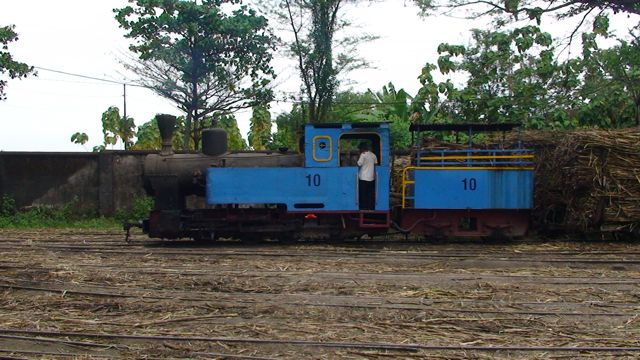
Locos No. 7 and 10 were in use but won't last long with the current brutal driving style
We started off today at Pagottan and found both Luttermollers out of action due to high cost of wood and lack of bagasse. There is even talk of converting them to fireless to get round this problem.
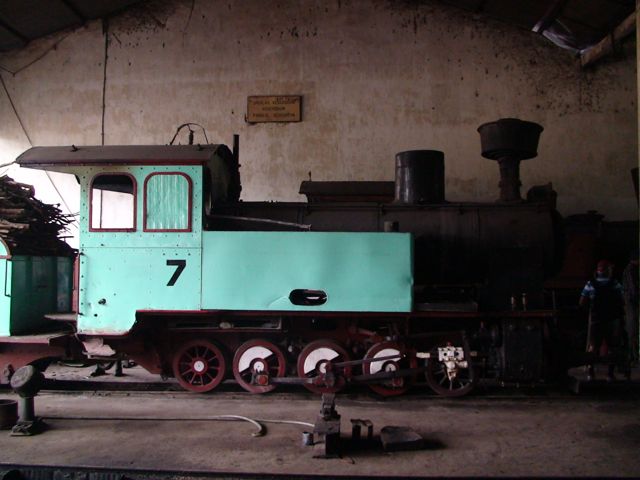
Inside framed luttermoller 0-10-0T in the shed at Pagottan
The road crossing at Pagottan is full of local interest.

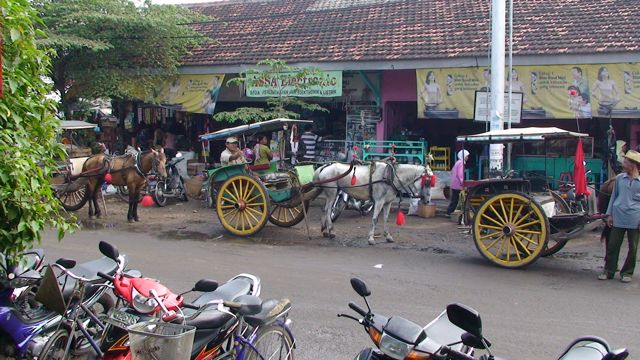
TC is scratch building working models of this loco (O gauge loco on OO gauge track), I said I'll buy a copy. I'll be happy to put any else who is interested in buying one in touch. The model has been designed to work on very bad track such as one might find at a sugar factory without derailing.
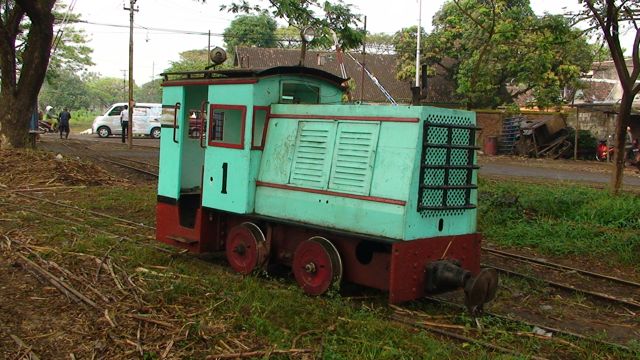
After our first non-steamy mill since Tersana Baru at the start of the trip, we move on to Kanigoro where we found this timeless scene. In fact, No. 11 has replaced No. 6 (seen in 2008) but steam carries on there.

For our 3rd mill of the day, we went to Rejosari where we had arranged the special steaming of No. 10 Salak, the jackshaft drive loco. It was the only loco in steam.
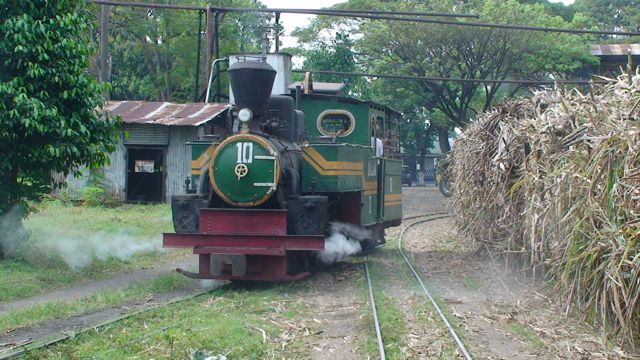
Having seen No. 10 shuffling around many times before, I concentrated on the real action with the 3 diesels.

No. 15 Malabar was taking empties from the mill to the truck yard.
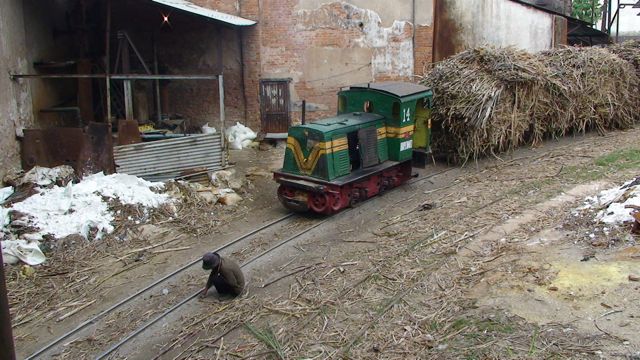
No. 14 Bromo was hauling cane to the mill train. The other diesel loco was a boxy Keio - the biggest loco with the easiest job pushing empty lori to the loading gantry.
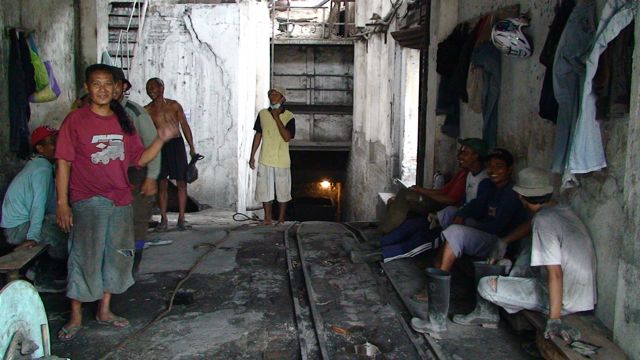
This was the first time I had walked from the office to the yard inside the mill. The ash from the boilers is removed with a cable operated incline.
Cepu
We arrived shortly after dark. The road is getting a bit better and doing most of it in daylight helps. My hotel suffers from a particularly sick taste in prints. This is above the bed in my room. I wonder if all rooms are the same? I think I'll have to get TC to tell them.
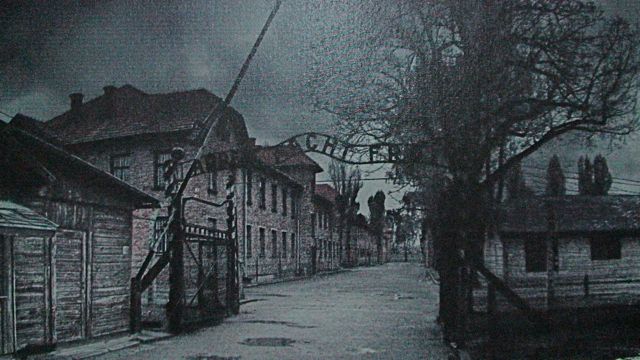
An attractive historical scene somewhere in Eastern Europe around 1940 - I don't think so!
This is always a grand day out. We had two buses starting at 6:00 and 6:30 from the hotel to the depot. Unfortunately, I was very prompt sending off the first bus and two people had to wait for the second bus. When we got to the depot, both locos were out and assembling the train. The small Ducroo & Braun loco worked only to the logyard and was a present from our friend Steve. Thanks, Steve.
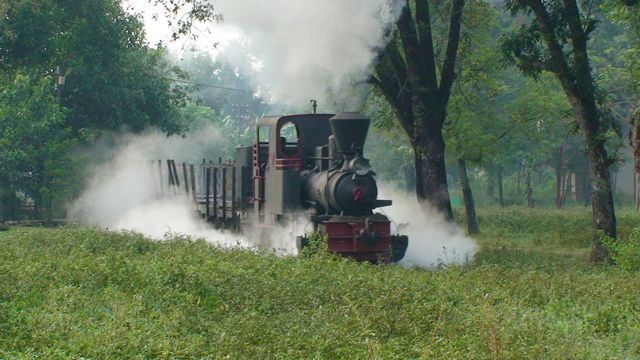
For a change, we arranged for double-heading in the logyard.
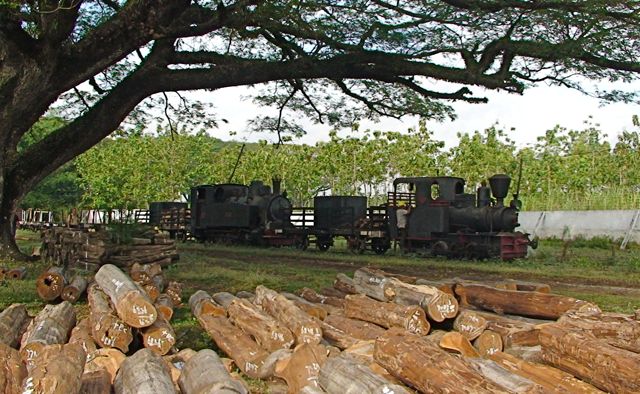
The Berliner 0-10-0T Bahargia needed to go back for water before we could continue to the forest.
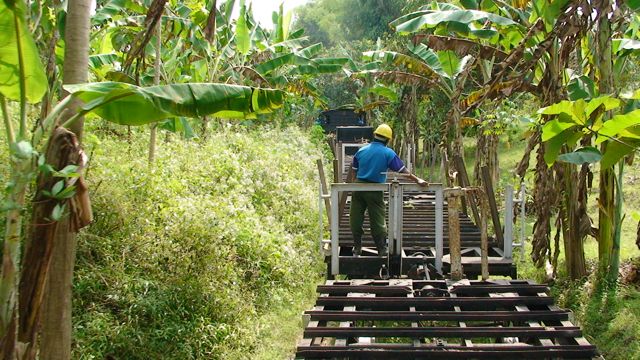
The line saw real steam use in April after a storm brought down lots of trees and the railway was used to move the logs to the wood yard. There are still some logs being recovered from that event and we had 3 wagons loaded for our return run.We had a mixed bag of weather and after rain and delays caused by watering, slipping on the wet rails and log loading, we got a decent silhouette on the spindly river bridge.
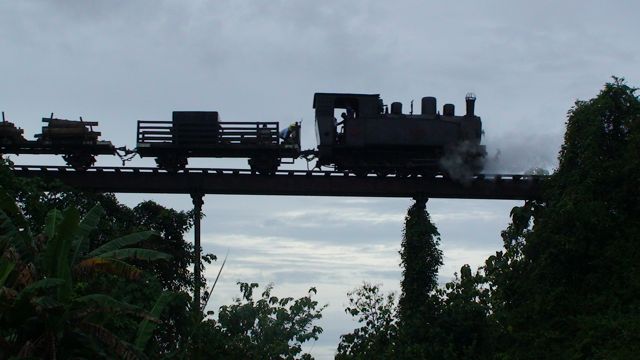
Some of us bailed out at the rail overbridge on the road to Blora while others stayed on for an after dark arrival back in Cepu.
28 July 2010 - Sudhono and Merican
More rain in the morning as we drove from Cepu to Ngawi and then towards Madiun to get to Sudhono. Phone calls the day before had not been successful in getting a loco in steam but they seem willing to do that for the post-tour given enough notice. TC arranged for the two locos to be dragged into the sunshine and we took some shots around the yard.
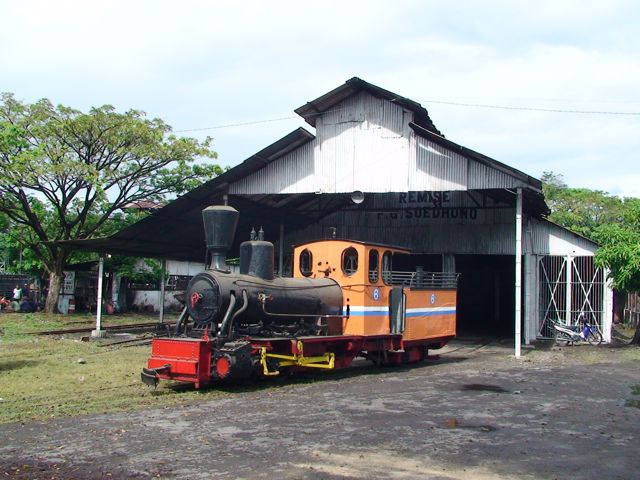
No. 6 should be the next working loco but its wheelbase is a bit long for the yard work
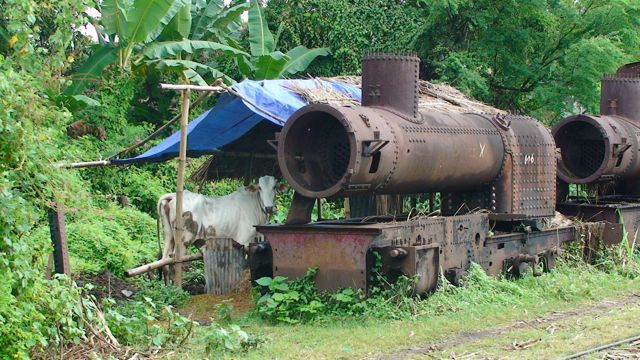
Two locos long out of use provide part of the shelter for the oxen.
Merican
We drove over to Kediri and dropped off our bags before returning to Merican. Before the first bus came back at 5 pm we had 3 departures of cane from the truck yard to the mill yard. Highlight was No. 205 ex-Pesantren the last mallet in Java with real work.
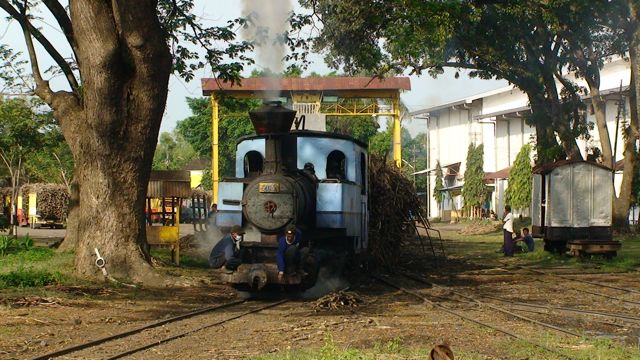
Here we see No. 205 departing the truck yard.
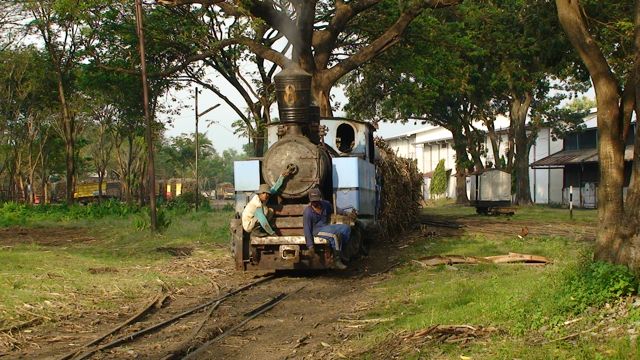
No. 8 was also in use.
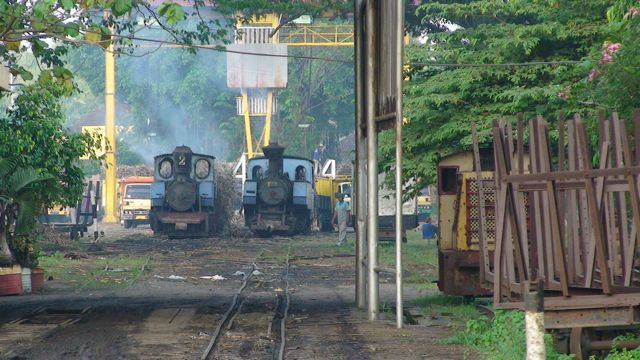
The third loco was No. 2.
While there I photographed a beautiful butterfly.
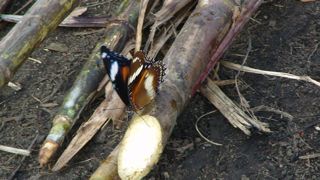
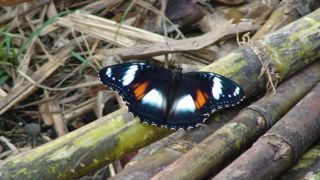
We left a hardcore of 5 (or was it 6?) to stay for night photography and headed back to Kediri. The sunset from the bus as we travelled aong the river into town was an interesting challenge. This was the best of the bunch.

29 July 2010 - Merican and Kedawung
No rain today but cloud on the mountains. We checked out normal time (6:30) and in the hotel carpark was this interesting flower on what looked like an agapanthus.
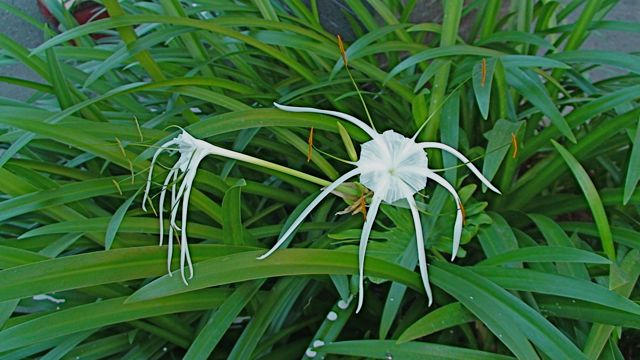
We went back to Merican and although the morning light angles are challenging, some good pictures can be taken. We asked for the shed with the stored locos to be opened.
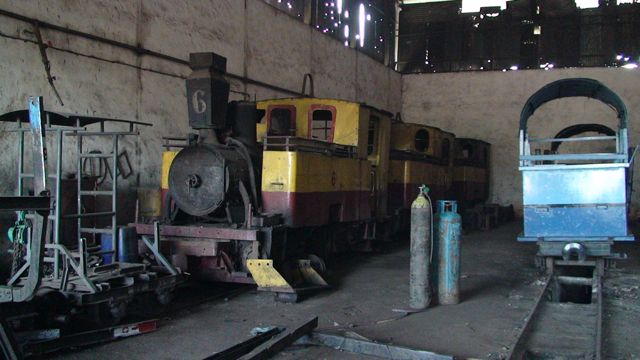
On our last visit in 2008, No. 6 was in use shunting cane into the mill.
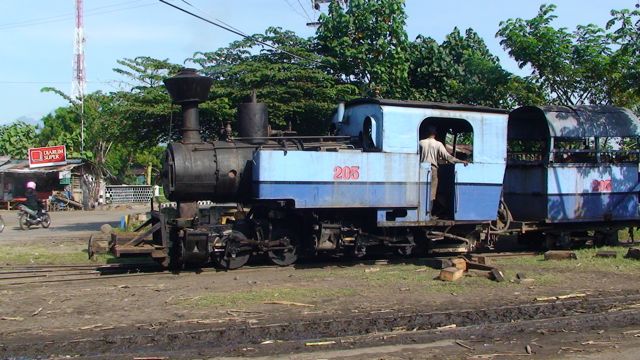
Impossible not to include another picture of the world's last mallet in industrial service
We took the scenic route from Kediri via Malang to Probolinggo and stopped a few times for mountain scenes.
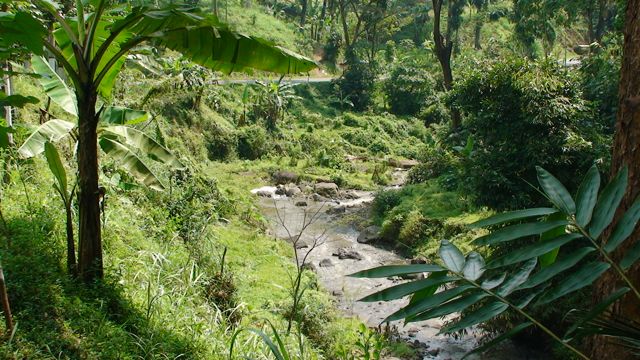
This was very inviting with a footpath down to the stream and across the other side. If only I could have abandoned the bus!
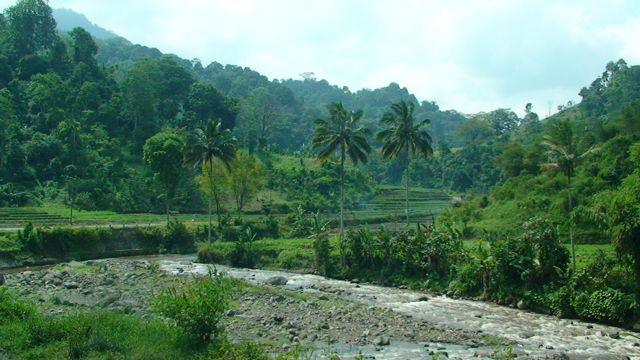
This was taken out of the window of the bus. A very scenic road.
Although traffic got heavier, we made it in reasonable time to Kedawung mill for a break. En route we had the worst meal of the trip for lunch - small, scrawny chicken and plain rice. No picture of that is necessary.
Kedawung
The first two picture show members of the group taking an interest in the shed.
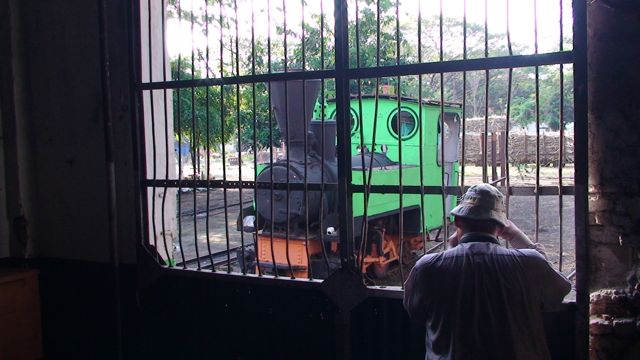
Richard (from Canada) phots the preserved loco outside the shed through the bars.
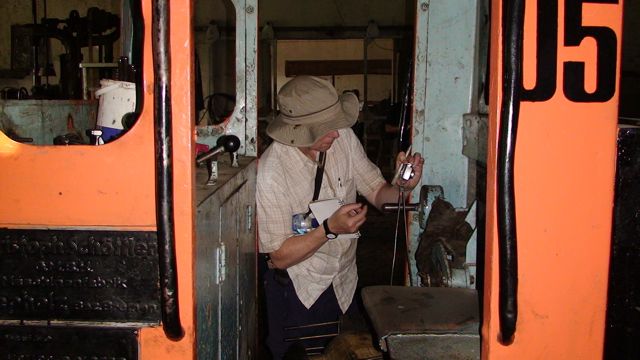
Mark from the UK inspects a small diesel.
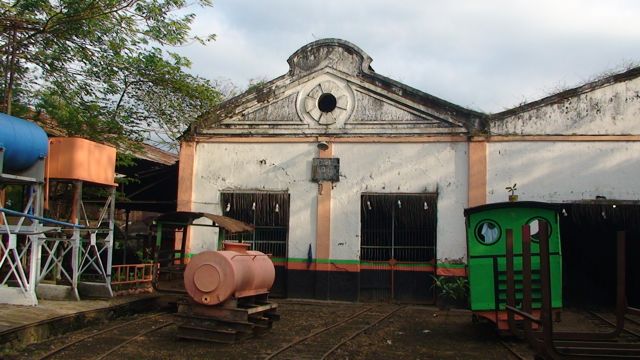
This is the front of the loco shed with a design dating back to the Dutch colonial period.
To see where we are going next on the tour, check out:
http://www.internationalsteam.co.uk/tours/java2010s.htm
for the main tour, and
http://www.users.waitrose.com/~jraby/posttour.html
for the Post-Tour return to Jakarta.
Rob Dickinson will also be blogging the Java tour but as he is leading the mill tour, it should be somewhat different.
http://www.internationalsteam.co.uk/tours/change2010.htm
John Browning one of our Australian participants will be at it too. To get another viewpoint see http://trainrover.blogspot.com/
You can see my 2008 Java blog here.
